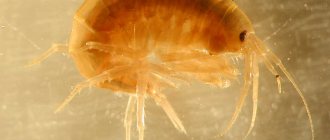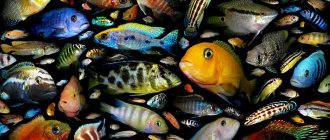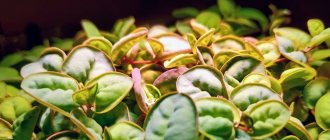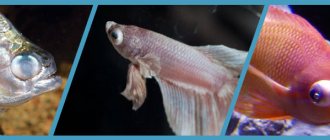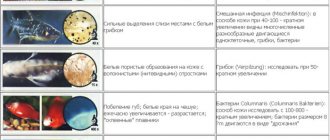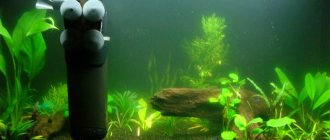Experienced aquarists always keep on hand basic medications for the treatment and prevention of various diseases in fish. Among these drugs should be Antipar. This is a complex medication that includes formalin and malachite green. The combination of these components makes the drug especially effective against fungal or bacterial skin lesions. Antipar is also used in case of damage gills in aquarium fish.
Description of the drug
“Antipar” is a combined-action antiseptic used in aquarium farming for the external treatment of fish. The effective action is ensured by formalin and malachite green, which are contained in the drug. Due to these components, the medicine actively fights various types of infections, and also accelerates recovery processes after mechanical damage to soft tissues.
"Anti-steam" for the treatment of aquarium fish
Note! The principle of action of the drug is to disrupt the metabolic processes of pathogens, which leads to their death.
Anti-steam for fish
"Antipar" is an antiparasitic, antifungal and antibacterial drug for external use. More often found on sale are plastic 20 ml vials with blue liquid. Ingredients: malachite green 0.2%, formaldehyde 10.0%, and water distilled to 100%. Anti-steam has a complex effect on pathogens: malachite green binds the intracellular cytoplasmic structures of parasites, formalin denatures their proteins.
As a result, the metabolic agents of fish diseases are disrupted and they die. The drug belongs to low-hazard substances (hazard class 3 according to GOST 12.1.007-76), in recommended doses it is well tolerated by fish and is slightly toxic to aquatic plants.
Indications for use
The drug “Antipar” is used to detect diseases such as:
- apiosomiasis;
- brooklynellosis;
- costiosis;
- oodinosis;
- cryptokaryonosis;
- saprolegniosis and other diseases of a mycotic or ectoprotozoal nature.
“Antipar” is used for various diseases.
Also, an antiseptic drug can be used to detect minor mechanical damage to the skin.
Instructions
Depending on the type of aquarium, the treatment principle may differ slightly. For example, if the aquarium is freshwater, then the therapy should be carried out directly in the tank. But marine fish should be treated in a special quarantine aquarium . The drug must be added to the aquarium at the rate of 1 ml of medication per 50 liters of aquarium water. The dosage does not depend on the capacity and duration of the therapeutic course. Before adding, the required amount of the drug must be dissolved in 300 ml of clean water and carefully distributed over the entire surface of the aquarium.
Instructions for use of the drug "Antipar"
If diseases developing due to infection with fungi or ciliates are detected, the duration of the course of therapy is at least 5 days. But with ichthyophthyriasis or oodinosis, longer treatment is required, so a 5-day course will not be enough. The recommended temperature of aquarium water for the therapy period is 24 ° C, but the tank must be sufficiently illuminated.
Ichthyophthyriosis is an infectious disease of fish caused by the attack of the equiciliated ciliate - Ichthyophthyrus
On a note! During a long course of treatment, the dose of the drug must be divided into several portions and administered gradually. This will increase the effectiveness of the medicine.
For a long course of treatment, the dose of the drug must be divided into several portions.
Upon completion of the course of therapy, a rehabilitation period begins, during which the condition of the fish should return to normal. It is necessary to change the water in the aquarium. All filter elements that contain sorbents must be turned off during the treatment period. In rare cases, when the disease worsens, a special procedure is performed - a short bath. To do this, you need to prepare a medicinal solution by mixing 10 liters of water with 1 ml of the drug. The sick fish should be placed in the prepared solution for about 2 hours and then returned back to the aquarium. The procedure is repeated every other day.
Tetra General Tonic Tetra Contralck Sidex Tetra Bactozyme Tetra Vital Tetra NitrateMinus Tetra AquaSafe Hydrogen PeroxideSymptoms and causes of the disease
If white dots appear on the surface of the body of fish in an aquarium, this is the main symptom of the emerging disease. Initially, the spots appear in small quantities, then every day the white dots become more and more numerous. The white dots on the fish are no larger than a grain of semolina. Ichthyophthyriosis in fish is developed by the bacteria ciliates Ichthyophthirius entering the aquarium along with food, soil and water. Bacteria attach to the scales of fish. The semolina on the fish are not actually white spots, but tubercles through which the parasites come out.
Symptoms of the disease:
- restless behavior;
- fish rub their bodies against objects, plants and soil;
- when internal organs are damaged, pets become passive to external stimuli, their appetite disappears, they are often on the surface of the aquarium, swallowing air;
- when the cornea of the eye is damaged, blindness develops;
- the color of the scales and body fades;
- the scales are covered with a white coating.
Without immediate action, the inhabitants of the aquarium may die as a result of lack of oxygen and damage to the epithelium of a large area.
White spots on the fish
The most frequently affected species are viviparous individuals. This bacterium is harmless to humans.
Causes of fish infection with semolina:
- live food, it is especially difficult to remove parasites from plants brought from tropical places;
- the appearance of new fish in the aquarium;
- dirty soil;
- as a result of poor quality and irregular cleaning of the aquarium: the deposits on the walls should be cleaned, the filter should be washed;
- cold water;
- temperature changes in the aquarium;
- stress.
Are there any contraindications
Despite its positive qualities, Antipar has some contraindications for use. First of all, the drug should not be used to detect damage to the integumentary tissues of fish . Some representatives of marine fauna do not tolerate the active components of the drug well, so it should be used with caution.
Special instructions and storage
"Anti-steam" is contraindicated for use in aquariums containing invertebrate aquatic organisms . Otherwise, the medicine may harm living beings. It is not recommended to combine with other drugs that contain alkali, an oxidizing agent, or copper and silver salts. Such a combination will certainly harm aquarium inhabitants.
Composition and properties
Anti-steam for aquarium fish is an effective comprehensive remedy for various diseases. This antiseptic bactericidal drug contains formaldehyde and organic dye malachite green. The medicine is a blue-green liquid. When you use it, the water also becomes colored, so don’t be alarmed.
It is sold in bottles of 15, 20 and 25 ml. It has a distinct strong odor of formaldehyde. Anti-steam has an antiseptic effect, due to which it promotes the healing of various surface injuries. In addition, it can be used to combat parasites, fungal infections, and other infectious diseases. The product prevents the proliferation of pathogens and destroys them.
Anti-steam is classified as a moderately dangerous product. The drug is low toxic for fish. If you strictly follow the instructions, it will not cause harm to aquarium inhabitants. It also does not have a harmful effect on plants, so they are not removed from the aquarium during treatment. It is important to follow the prescribed rules of use and the required dosage.
Side effects
After the drug dissolves, the water in the aquarium changes color and becomes blue-green. An overdose is also possible, in which infected fish may experience impaired coordination of movements (you may notice how the fish begin to move chaotically around the aquarium).
The drug "Antipar" has some side effects
If any abnormalities occur, treatment should be stopped and affected fish should be moved to a separate container as soon as possible. The water in this container must be clean and without any additives.
Hexamitosis, or hole disease
Fin rot in aquarium fish
Why do fish die in an aquarium?
White small worms on the glass of an aquarium
Pickup on other days.
The shelf life of the order is three days.
We will deliver the goods you need upon order to the selected Pickup Point the next day, after confirmation of the order by the operator. The possibility of delivering goods from the Online Store Warehouse to the Pickup Point must be clarified with the operator when confirming the order.
As soon as the goods ordered are delivered to the Pickup Point, we will send you an SMS indicating that the order is ready for pickup. If the order is not purchased within 3 days, the order will be cancelled.

